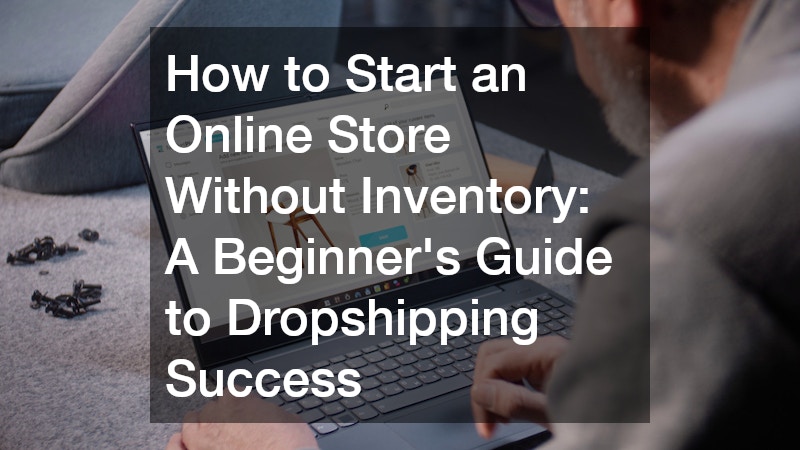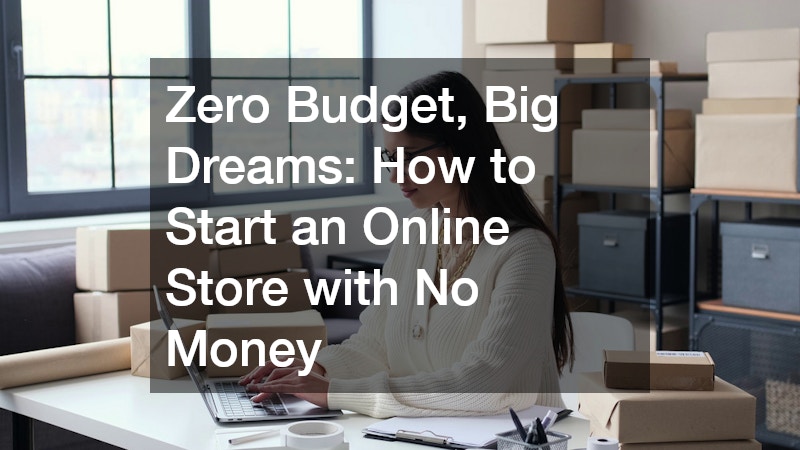
Starting an online store no longer requires a warehouse full of products or a massive startup budget. With the rise of e-commerce platforms and third-party fulfillment services, launching a business with zero inventory is not only possible—it’s smart. Whether you’re a budding entrepreneur or someone looking to diversify income streams, learning how to start an online store without inventory can open the door to scalable profits with minimal risk.
This guide will walk you through the essential steps, tools, and business models that let you sell products online without physically stocking them.
What Does It Mean to Run an Inventory-Free Online Store?
Running an online store without inventory means you don’t keep or manage physical products yourself. Instead, when a customer places an order, the product is fulfilled and shipped by a third party, like a supplier or manufacturer. This model reduces overhead, eliminates the need for storage space, and minimizes upfront investment.
Two of the most common approaches include:
- Dropshipping: You list products on your store, but your supplier handles storage and shipping.
- Print-on-Demand (POD): You sell custom-designed items (like t-shirts or mugs) printed and shipped by a POD provider when someone orders.
These methods allow business owners to focus on marketing, customer experience, and scaling, rather than managing stock.
Is Dropshipping Right for You?
Before you dive in, consider whether dropshipping aligns with your goals and skills. This model works best for people who are comfortable with digital marketing and don’t mind competition. Since you’ll be relying on a supplier, you’ll have limited control over fulfillment and shipping speed. However, it’s a fantastic way to test products without buying inventory upfront.
Advantages:
- Low startup cost
- No need for storage or shipping logistics
- Wide product selection
- Flexible location (work from anywhere)
Challenges:
- Lower profit margins
- Reliance on supplier stock levels
- Difficult to brand uniquely
- Potential quality control issues
If you’re a first-time entrepreneur looking to start small, this can be an ideal way to learn the ropes of e-commerce.
How to Start an Online Store Without Inventory: Step-by-Step
This section provides a practical roadmap to launch your online store without holding inventory.
1. Choose Your Niche
Start with a focused product category or audience. Niching down helps you attract targeted traffic and reduces competition.
Examples:
- Eco-friendly home goods
- Fitness accessories for women
- Pet products for dog lovers
Use Google Trends, keyword tools, and social media to validate demand.
2. Select a Business Model
- Dropshipping: Use platforms like AliExpress, DSers, or Spocket to connect with suppliers.
- Print-on-Demand: Use services like Printful, Printify, or Gelato to create custom products.
Choose the model that suits your skill set and interests.
3. Set Up Your Online Store
You don’t need to be a tech expert to build a professional-looking store.
Popular platforms include:
- Shopify: Easy to use with built-in dropshipping integrations.
- WooCommerce: Great for WordPress users.
- BigCommerce or Wix: All-in-one e-commerce solutions.
Choose a clean, responsive theme and optimize for mobile users.
4. Connect with a Supplier
If you’re dropshipping, select reliable suppliers with good reviews, fast shipping times, and clear return policies. For print-on-demand, link your POD account to your store.
Key tips:
- Order samples to check product quality.
- Clarify shipping times and costs.
- Set up tracking and return processes.
5. Add Products and Write Great Descriptions
Don’t copy manufacturer descriptions. Write your own compelling, SEO-friendly product descriptions that highlight benefits, solve problems, and include relevant keywords.
Example format:
- Short, catchy title
- Bullet points for features
- Clear call to action
6. Market Your Store
Once your store is live, it’s time to drive traffic and build trust.
Marketing channels:
- Social media (Instagram, TikTok, Facebook)
- Content marketing (blogs, how-to videos)
- Influencer partnerships
- Paid ads (Google Ads, Facebook Ads)
Use email marketing to stay in touch with customers and retarget visitors who didn’t buy the first time.
Can You Start an Online Store with No Money?
Yes—thanks to free tools and platforms, how to start an online store with no money is no longer just a dream. You can set up a basic Shopify trial, use free themes, and leverage organic traffic strategies to start selling without spending a dime. While investing some funds can speed things up, creativity and consistency matter more than capital when you’re just beginning.
Free tools you can use:
- Canva (for design)
- Mailchimp (email marketing)
- Google Trends and UberSuggest (for keyword research)
- TikTok and Instagram (for free exposure)
Start small, reinvest profits, and grow gradually.
What Mistakes Should You Avoid When Starting Out?
When launching your first store, it’s easy to get overwhelmed. Avoid these common beginner mistakes:
- Choosing too broad a niche
- Relying on only one supplier
- Ignoring SEO and product descriptions
- Not testing the customer experience (checkout, shipping, etc.)
- Skipping market research
Take your time and treat your store like a real business, not a get-rich-quick scheme.
Final Thoughts: Build Smart, Scale Strategically
Starting an online store without inventory is one of the most accessible business models today. With a solid plan, reliable suppliers, and an eye for marketing, you can build a profitable store without ever touching a product. Focus on creating a brand experience that customers trust, and don’t rush the process. With consistency, your dream of running an online business—without inventory—can become a thriving reality.



